Cloud promised freedom to build, deploy and scale anywhere. Without discipline, that freedom becomes noise. HashiCorp’s 2025 Cloud Complexity Report shows the shift clearly: 52 per cent of organisations now rank multicloud and hybrid cloud complexity among their top three infrastructure challenges.
These are mainstream enterprises that moved fast into multicloud and now juggle a sprawl of platforms, tools and policies. The same report notes that 97 per cent use multiple tools to manage their environments, averaging five per company, and that more than half run hybrid models across public and private clouds.
Complexity is often a by-product of progress. Engineers choose the best-fit provider for each workload, developers embrace containers and Kubernetes, and finance teams face rising bills and unpredictable commitments. Patchwork management cannot keep up. Manual oversight, ad hoc dashboards and scattered scripts break at scale.
Flexera’s 2025 State of the Cloud Report puts hard numbers to the pain: managing cloud spend is a challenge for 84 per cent of organisations and ensuring security is a challenge for 77 per cent. Fragmented visibility and inconsistent policies drive both.
The response is not to cut providers. It is to coordinate them. Enterprises are adopting platforms that unify governance, automate routine work, apply financial discipline and give teams a shared view of what is running where. The goal is not fewer clouds but fewer blind spots, fewer manual handoffs and fewer surprises on the bill.

What Cloud Complexity Really Means for the Enterprise
Cloud complexity is not proof of a bad strategy. It is the cost of ambition. Most enterprises will not live inside a single provider. They use Amazon Web Services for breadth, Microsoft Azure for enterprise integration, Google Cloud for data and machine learning, and private clouds for sensitive or regulated workloads.
Flexera’s research shows the average organisation uses at least five providers and countless platform services. Each brings its own consoles, APIs, naming and billing models. Fragmentation creates friction and blurs accountability.
Basic questions get hard to answer:
- which workloads run where,
- whether policies are compliant by jurisdiction,
- and what a service really costs once reserved instances, support plans and data egress are counted.
DevOps teams juggle incompatible identity models. Security teams try to enforce consistent controls across platforms that were not designed to interoperate. Finance teams reconcile invoices that do not align from one provider to the next.
Tool sprawl makes this worse. HashiCorp reports that nearly every organisation uses multiple management tools, averaging five per company. FinOps practitioners see the shift too. Waste reduction and forecasting remain priorities, but the FinOps Foundation expects governance and policy enforcement to take the top spot by 2026.
The focus is moving from seeing spend to preventing misuse. There is also a performance cost. Containers and microservices promise elasticity, yet a 2025 Cast AI benchmark shows average CPU utilisation at 10 per cent and memory at 23 per cent across thousands of Kubernetes clusters.
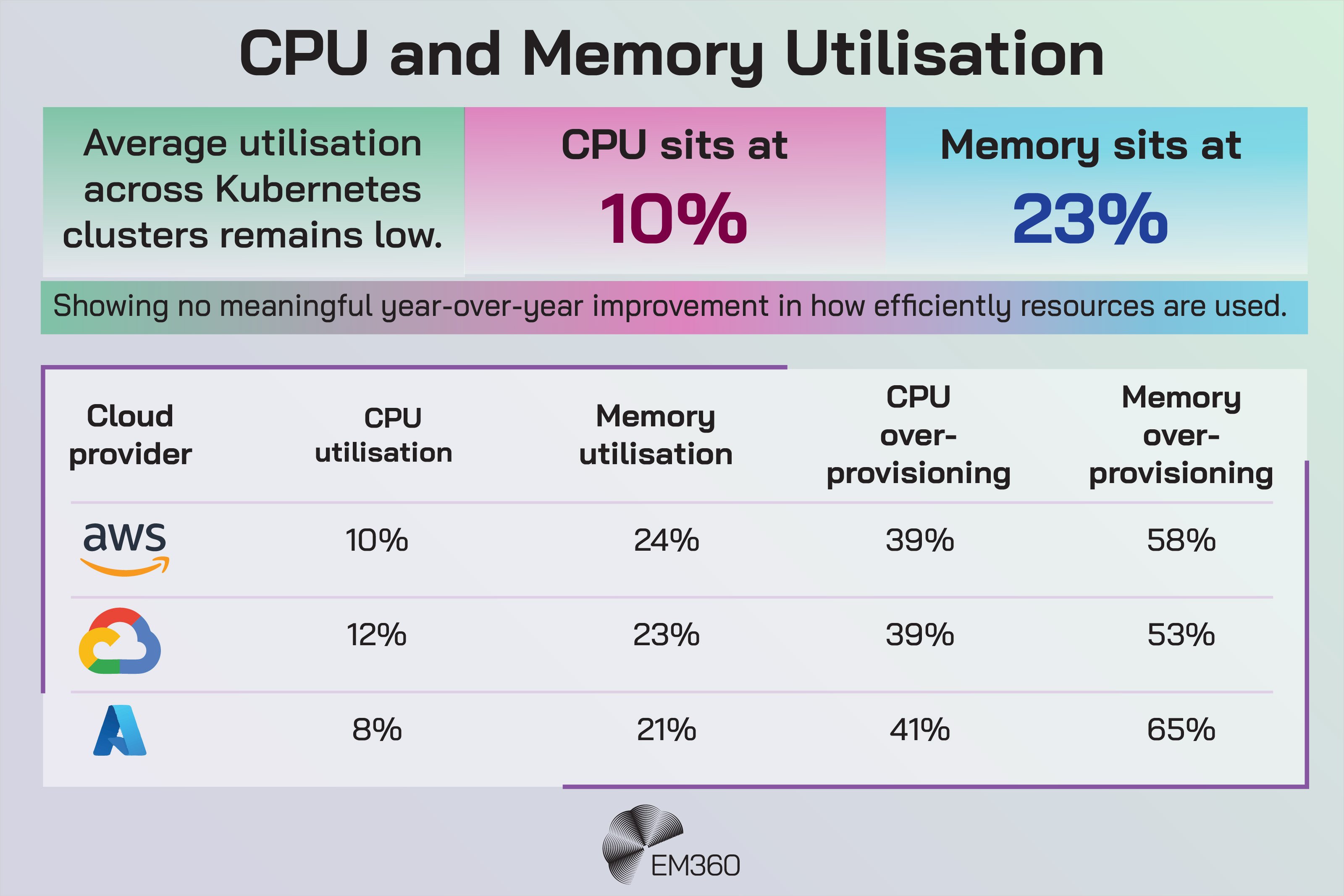
Manual tuning cannot keep pace with deployments. Automation and policy-driven remediation are needed to close the gap between the capacity you provision and what you actually consume.
The financial stakes are rising. IDC forecasts public cloud spend at US$805 billion in 2024 and doubling by 2028, a 19.4 per cent compound annual growth rate. As AI and data-heavy workloads scale, uncontrolled estates invite uncontrolled bills.
FinOps research indicates 65 per cent of organisations plan to bring SaaS spend under FinOps, with nearly half adding licensing and private cloud costs. Financial governance is widening.
For CIOs, CISOs and platform engineering leaders, cloud complexity is not a single issue but a knot of operational, financial and security concerns that cross team boundaries. Seeing that full picture is the first step to untying it.
Why Managing Cloud Complexity Requires a Unified Control Plane
Consolidating providers sounds neat, but it rarely fixes the root problem. The breakthrough comes from coordination, not restriction. A unified control plane projects resources from any environment — public cloud, private cloud, on premises or edge — into a single source of truth.
This is more than a shared dashboard. A unified plane enforces policy as code across heterogeneous systems, blends cost and performance data in real time, automates remediation using AI insights, and lets finance, security, operations and development work from the same signals.
The market has moved in this direction. What started as monitoring and cost views now fuses FinOps, CloudOps and SecOps, orchestrates across Kubernetes and virtual machines, embeds compliance into pipelines, and predicts capacity or cost anomalies with machine learning.
The case for policy-driven automation keeps building. The FinOps Foundation expects governance and policy enforcement to overtake waste reduction as the top priority. Manual reviews cannot keep pace.
With average Kubernetes CPU utilisation at 10 per cent, continuous rightsizing and automated scaling are the only way to close the gap between provisioned and consumed resources. As more organisations bring SaaS, licensing and private cloud under FinOps, cost visibility must extend beyond infrastructure into the services that sit on top.
Security and compliance intensify the need. Each provider has its own identity, encryption and audit stack. Without a unifying layer, consistent policy becomes brittle. Modern platforms embed policy engines that apply rules before deployment, watch for drift after deployment, and produce consistent evidence for auditors regardless of where workloads run.
The result is alignment. By correlating consumption with performance and business outcomes, leaders can balance cost, reliability and speed. The goal is not one cloud. It is one language to describe and control them all.
Key Features That Define Modern Cloud Complexity Management Tools
Not every platform built for multicloud operations can truly manage complexity. The difference lies in a few core capabilities — the ones that turn fragmented estates into cohesive systems of control. These are not “nice to haves.” They are the foundations of clarity, accountability and scale.

Unified visibility and inventory
Enterprises need a single view of every resource — servers, clusters, databases and SaaS services — regardless of where they live. Consistent tagging and metadata make that possible, enabling cross-cloud searches, shared context and consolidated reporting that actually means something.
Policy as code and continuous compliance
Manual governance cannot keep pace with the cloud’s velocity. Defining cost, security and configuration rules as code allows them to be enforced automatically from deployment through to day-to-day operations. Drift detection and auto-remediation keep environments compliant without slowing teams down.
Intelligent automation and self-healing
Automation now extends far beyond provisioning. The most advanced platforms use AI-driven insights to recommend rightsizing, identify anomalies and trigger corrective actions in real time. The goal is to remove manual effort while keeping guardrails intact.
Built-in FinOps and commitment management
Financial governance cannot live outside the platform. Real-time cost visibility, forecasting, chargeback and optimisation for reserved instances or savings plans ensure that spending decisions stay tied to business outcomes — not just budget lines.
Cross-platform orchestration
Complexity is not only about multiple clouds but also about multiple compute models. Modern tools coordinate workloads across virtual machines and Kubernetes clusters, supporting hybrid deployment models and continuous delivery without extra overhead.
Performance assurance and predictive scaling
To close the gap between provisioned and consumed capacity, platforms need analytics that anticipate demand, detect degradation and adjust automatically. Auto-scaling should balance cost and performance, ensuring efficiency never comes at the expense of reliability.
These capabilities define what “maturity” now means in cloud management. They separate tools that simply monitor from those that help enterprises master complexity.
Leading Platforms Simplifying Cloud Complexity in 2025
We chose the enterprises below based on enterprise adoption, functional breadth and how well they address the multifaceted nature of cloud complexity. They cover cost governance, policy enforcement, orchestration and automation across hybrid and multicloud environments.
Cisco Intersight
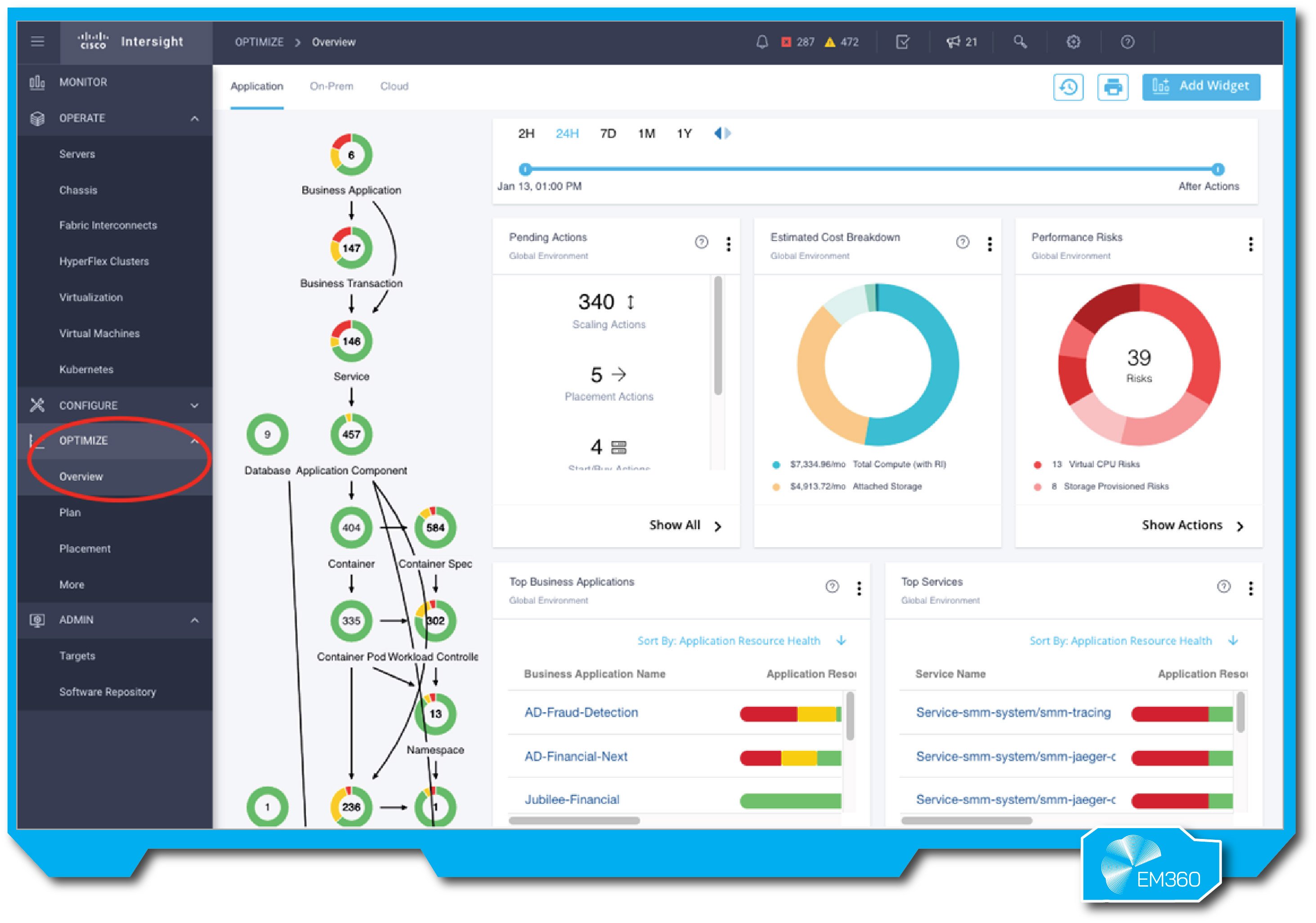
Cisco has long been synonymous with networking and data‑center infrastructure. As customers began to virtualise workloads and adopt hyperconverged systems, Cisco evolved its portfolio to provide management capabilities beyond hardware. Cisco Intersight is the culmination of this evolution.
Introduced as a SaaS platform for managing Cisco UCS servers, it has grown into a cloud‑based operations platform that unifies management for Cisco’s entire compute stack, including HyperFlex and converged infrastructure. Intersight reflects Cisco’s recognition that hardware alone no longer defines value; orchestration, automation and insights are what unlock agility.
Enterprise ready features
The platform provides a unified real‑time view of all Cisco UCS, converged and hyperconverged infrastructure. This inventory spans edge devices and remote offices, enabling administrators to control and automate infrastructure from a single console. Intersight’s predictive insights interpret real telemetry from the hardware stack so IT teams can see risks before they turn into failures.
The platform also tracks power consumption, giving leaders a clearer view of where energy is being used and where it is being wasted. Routine tasks can be automated through a simple drag and drop workflow builder, and it connects easily with existing tooling such as Ansible or Terraform. Security stays active in the background, and open APIs and an SDK allow the platform to slot into broader operational ecosystems without friction.
Pros
- A single view across Cisco UCS, HyperFlex and converged infrastructure reduces tool sprawl and simplifies lifecycle management.
- Predictive insights support proactive maintenance and help avoid unplanned downtime.
- Energy monitoring exposes consumption patterns, strengthening both sustainability and cost-control efforts.
- Drag‑and‑drop automation and integration with Ansible/Terraform reduce manual configuration and accelerate provisioning.
- Open API and SDK support integration with broader IT ecosystems and custom workflows.
Cons
- Primarily focused on Cisco hardware; organisations with heterogeneous hardware stacks may need additional tools.
- Feature parity across public cloud providers is limited compared with pure multicloud platforms.
- Predictive analytics depend on the quality and volume of telemetry data; limited data can reduce accuracy.
Best for
Enterprises standardising on Cisco hardware or pursuing unified lifecycle management of UCS, HyperFlex and edge devices. Companies seeking predictive maintenance and integrated automation for Cisco‑centric infrastructure will find Intersight particularly valuable.
CloudBolt Platform
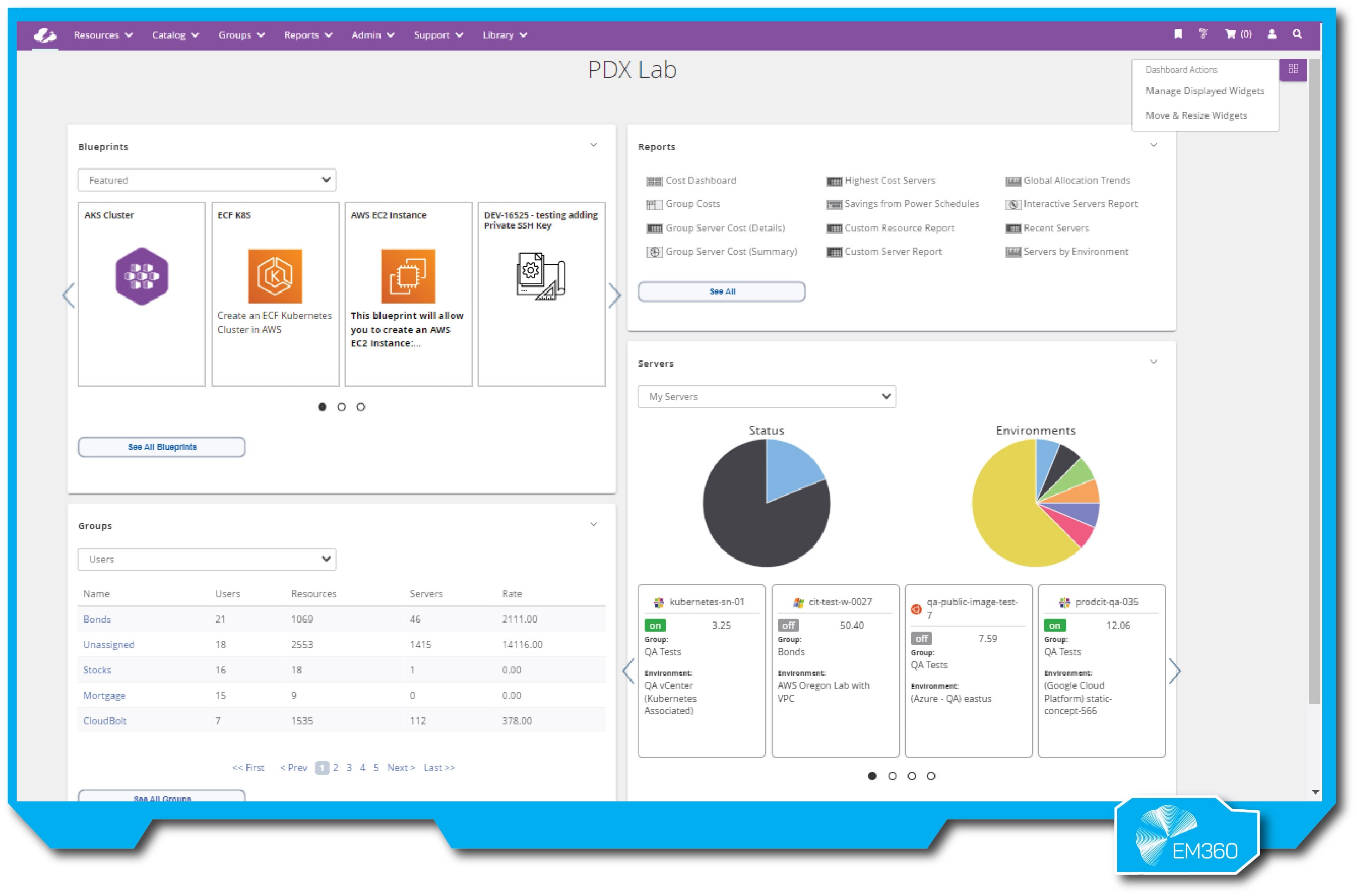
CloudBolt began as a provisioning tool designed to give developers self‑service access to infrastructure. Over the past decade it has grown into a comprehensive hybrid‑multicloud management platform that blends orchestration, governance and FinOps. CloudBolt’s emphasis on “Augmented FinOps” reflects a belief that financial accountability is inseparable from operational excellence.
Enterprise ready features
The platform brings FinOps to life with AI‑driven anomaly detection and precise cost allocation through its FinOps Open Cost and Usage Specification (FOCUS), enabling organisations to catch spending anomalies and enforce budgets.
A policy engine allows IT teams to automate resource delivery, enforce governance and provide unified control across public and private clouds. CloudBolt integrates with major providers including AWS, Azure and Google Cloud, as well as container orchestrators.
Its machine learning‑based optimisation continuously rightsizes container resources and works alongside horizontal pod autoscalers to cut costs while maintaining reliability.
Pros
- AI-driven FinOps surfaces cost anomalies early and allocates spend with real clarity, giving teams a more honest picture of where money is going.
- Policy automation keeps governance steady and speeds up self-service provisioning, reducing the slowdowns that come with manual approvals.
- Broad integration across AWS, Azure, GCP and private environments makes it practical for almost any multicloud estate.
- Machine learning–based rightsizing lifts Kubernetes efficiency while maintaining reliability.
- A clean interface and blueprint templates make it easier for teams without deep cloud expertise to get value quickly.
Cons
- Machine learning features become more accurate as datasets grow, so smaller environments may see limited optimisation at first.
- Capabilities like anomaly detection and rightsizing may need extra configuration or expertise before they deliver full value.
- As a smaller vendor, CloudBolt may feel like a higher-risk choice for enterprises used to large, established providers.
Best for
IT operations teams seeking strong FinOps insights combined with policy automation across multiple providers. Organisations that prioritise cost governance and container optimisation will find CloudBolt’s augmented FinOps capabilities compelling.
Flexera One

Flexera built its reputation in software asset management and licensing optimisation. Recognising that cloud adoption blurred the boundaries between hardware, software, SaaS and cloud services, Flexera developed Flexera One as a SaaS suite that unifies these domains.
Flexera One uses next‑generation data analytics to optimise costs, ensure compliance, improve security and support sustainability. The platform bridges IT asset management (ITAM) and FinOps, giving organisations a single view of hardware, software, SaaS and cloud assets and their associated costs.
Enterprise ready features
Flexera One offers cloud commitment management and spend optimisation across Azure, Google Cloud and AWS, as well as support for private clouds. It provides granular visibility into marketplace purchases and vendor contracts, enabling better negotiation and renewal strategies.
By unifying cost analytics and licensing data, Flexera helps enterprises negotiate with vendors from a position of knowledge. The platform’s ability to optimise software licences across on‑premises, SaaS and cloud environments positions it uniquely among the tools listed here.
Pros
- Single platform combining ITAM and FinOps delivers holistic visibility across hardware, software, SaaS and cloud services.
- Commitment management and spend optimisation support all major cloud providers and private clouds.
- Advanced analytics improve software licence utilisation and vendor negotiation.
- Integrated compliance and security insights reduce risk and support audits.
- Sustainability metrics help align cloud usage with corporate environmental goals.
Cons
- The breadth of data sources requires significant integration effort and data normalisation.
- More focused on cost and governance than on operational automation; enterprises may need separate orchestration tools.
- May be overkill for smaller organisations or those with simple cloud estates.
Best for
Enterprises seeking end‑to‑end cost and compliance visibility across complex portfolios of software, SaaS and cloud infrastructure. Flexera One is particularly valuable for companies with extensive vendor contracts and licensing obligations.
Google Anthos / Google Distributed Cloud
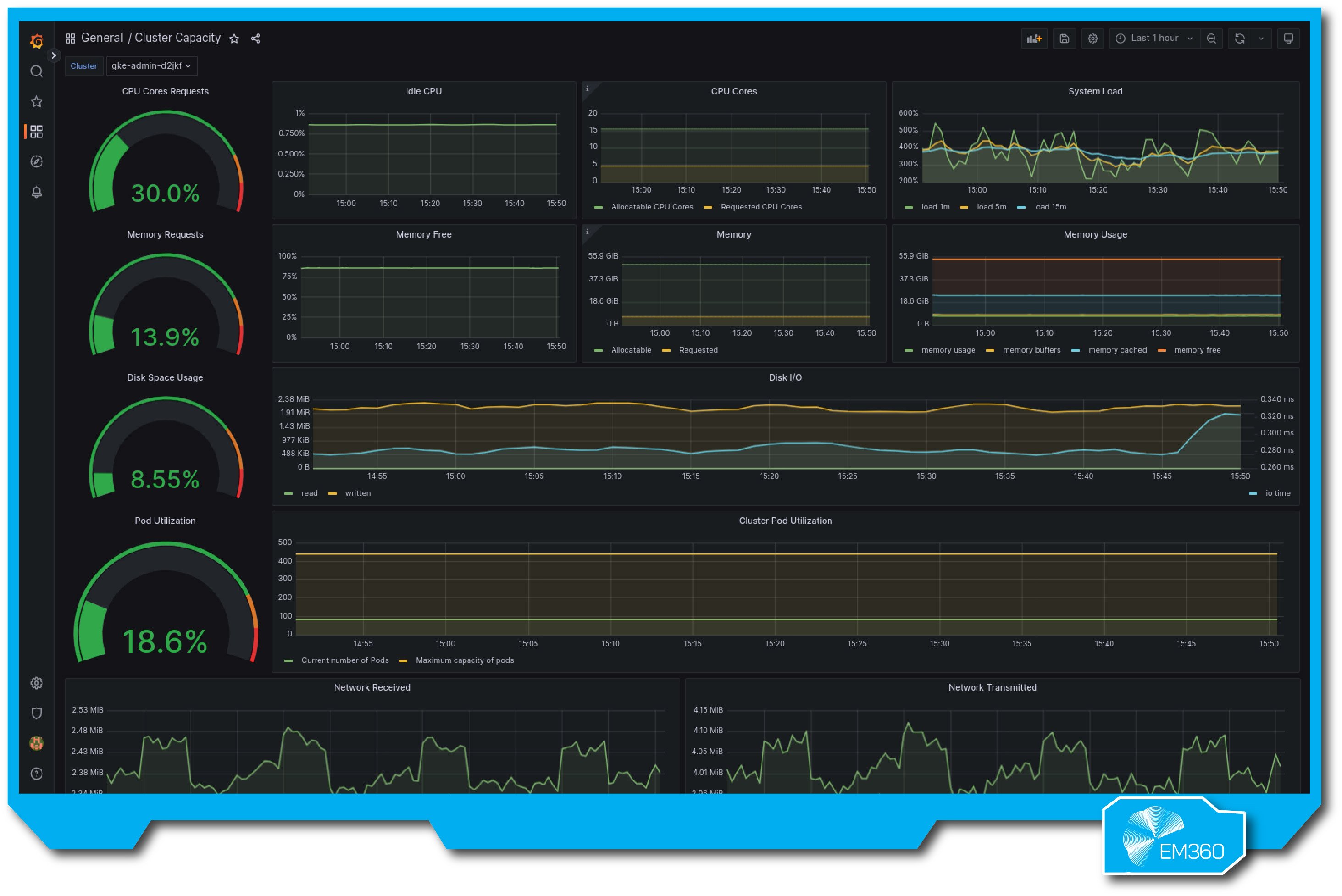
Google Anthos launched as Google’s bid to extend its Kubernetes heritage beyond its own cloud. Anchored on open‑source technologies like Kubernetes and Istio, Anthos eliminates inconsistencies across on‑premises, multi‑cloud and hybrid infrastructures. It brings the Google Kubernetes Engine (GKE) experience to enterprise data centres and runs on AWS and Azure, allowing organisations to attach existing clusters under a central management plane.
Enterprise ready features
Anthos provides a single‑pane view across multiple clusters via its ‘environ’ concept, enabling consistent policy application and fleet management. Anthos Configuration Management manages configurations and policies across clusters, with Config Sync continuously reconciling state with a central repository.
The Anthos Policy Controller enforces security and compliance rules through a library of pre‑built policies. Security features include optimised container images, secrets management and integration with binary authorisation. Anthos is also evolving into Google Distributed Cloud, enabling customers to run GCP services in their own data centres or at the edge.
Pros
- A single approach to managing Kubernetes clusters across on premises, AWS, Azure and Google Cloud gives teams the consistency they usually have to piece together themselves.
- GitOps-based configuration and policy management keeps governance declarative, version controlled and predictable.
- Built-in integration with Istio and Envoy strengthens networking, service mesh and security without extra layers of tooling.
- Support for existing clusters protects earlier investments, whether they run in a private data centre or on a third-party platform.
- The shift toward Distributed Cloud extends GCP services to edge and private environments, widening what organisations can build and where they can run it.
Cons
- Requires Kubernetes expertise; organisations without a container strategy may face a steep learning curve.
- Primarily focused on containerised workloads; virtual machine support is limited compared with broader CMPs.
- Dependence on Google’s ecosystem may raise concerns about vendor lock‑in despite multi‑cloud claims.
Best for
Developers and platform teams managing Kubernetes clusters across cloud and on‑premises environments. Anthos suits organisations committed to open‑source standards who want to leverage Google’s managed services beyond Google Cloud.
HPE Morpheus (Morpheus Data)
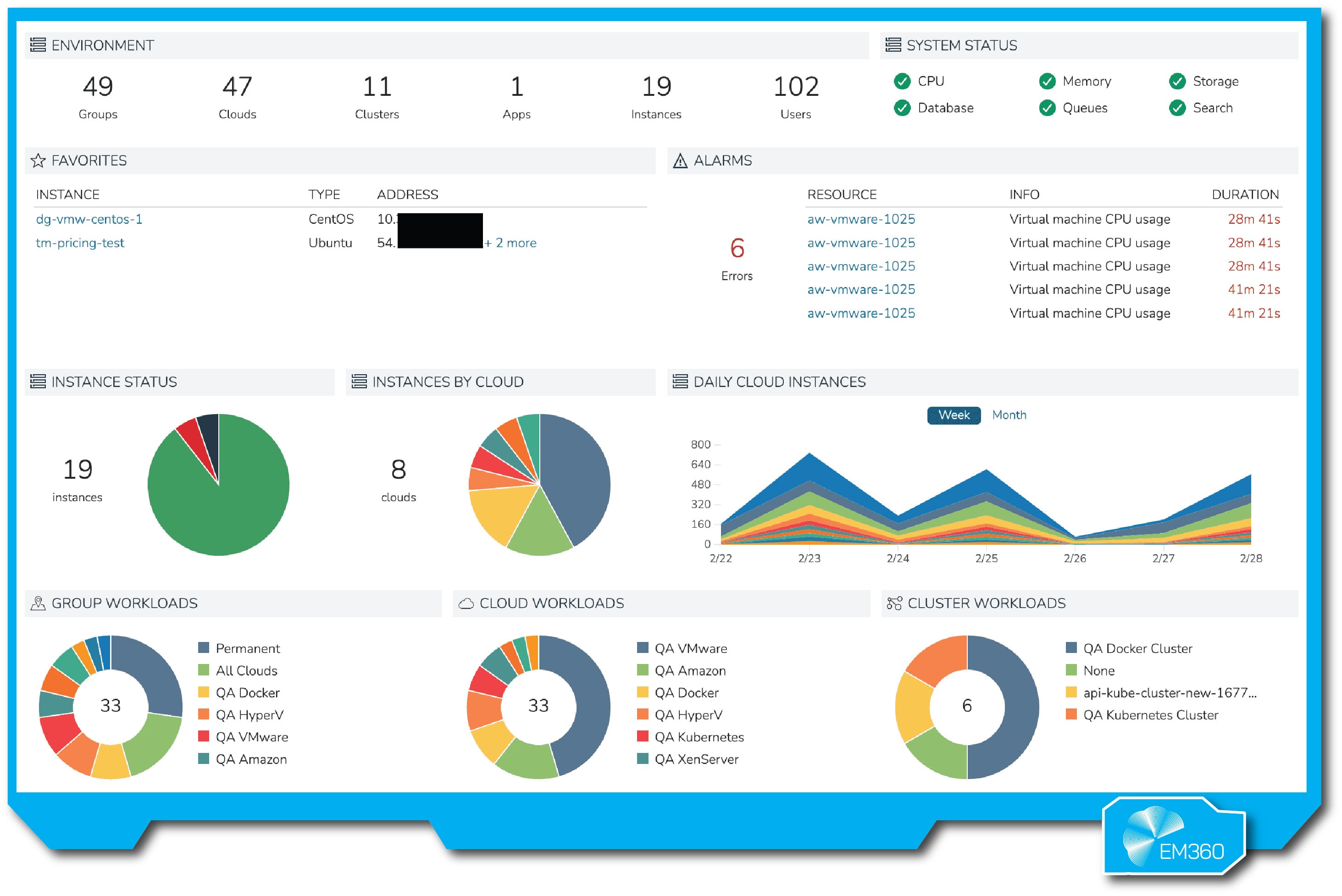
Originally developed by Morpheus Data and later integrated into Hewlett Packard Enterprise’s portfolio, HPE Morpheus is a hybrid‑cloud management platform focused on self‑service automation and cloud governance.
HPE positions Morpheus as the glue between private and public clouds, providing a consistent interface for provisioning, orchestration and policy enforcement. The platform’s self‑service engine delivers agility, allowing teams to spin up on‑premises private clouds or centralise access to public clouds while orchestrating change through cost analytics, governance and automation.
Enterprise ready features
Morpheus speeds application deployment via on‑demand access to resources from a central catalogue and manages applications throughout their lifecycle with automation. A powerful policy engine implements role‑based access control (RBAC) and governance policies to reduce shadow IT.
Cost analytics give teams a clearer view of how resources are used across hybrid environments and help rightsize where needed. Blueprints and runbooks support infrastructure as code, and the platform connects easily with major public and private clouds, along with tools like Ansible, Terraform and Chef.
Pros
- Strong self-service and orchestration capabilities speed up provisioning across hybrid environments.
- A policy engine enforces RBAC and governance consistently, limiting risk and controlling sprawl.
- Cost analytics and optimisation improve resource efficiency and strengthen chargeback or showback models.
- Deep integration with infrastructure as code tools and public clouds supports DevOps practices without extra overhead.
- Vendor independence and multi-hypervisor support give organisations more flexibility in how they build and operate.
Cons
- May require significant initial configuration to align with organisational policies and naming conventions.
- Focus on infrastructure provisioning means less emphasis on application‑layer observability or FinOps compared with other platforms.
- Smaller ecosystem compared with hyperscalers; integration with specialised services may require custom work.
Best for
Hybrid enterprises seeking centralised provisioning and cost analytics across internal and public clouds. Morpheus is ideal for organisations looking to empower developers with self‑service while maintaining governance and cost control.
IBM FinOps and Optimisation Suite (Apptio Cloudability + Turbonomic + Kubecost)
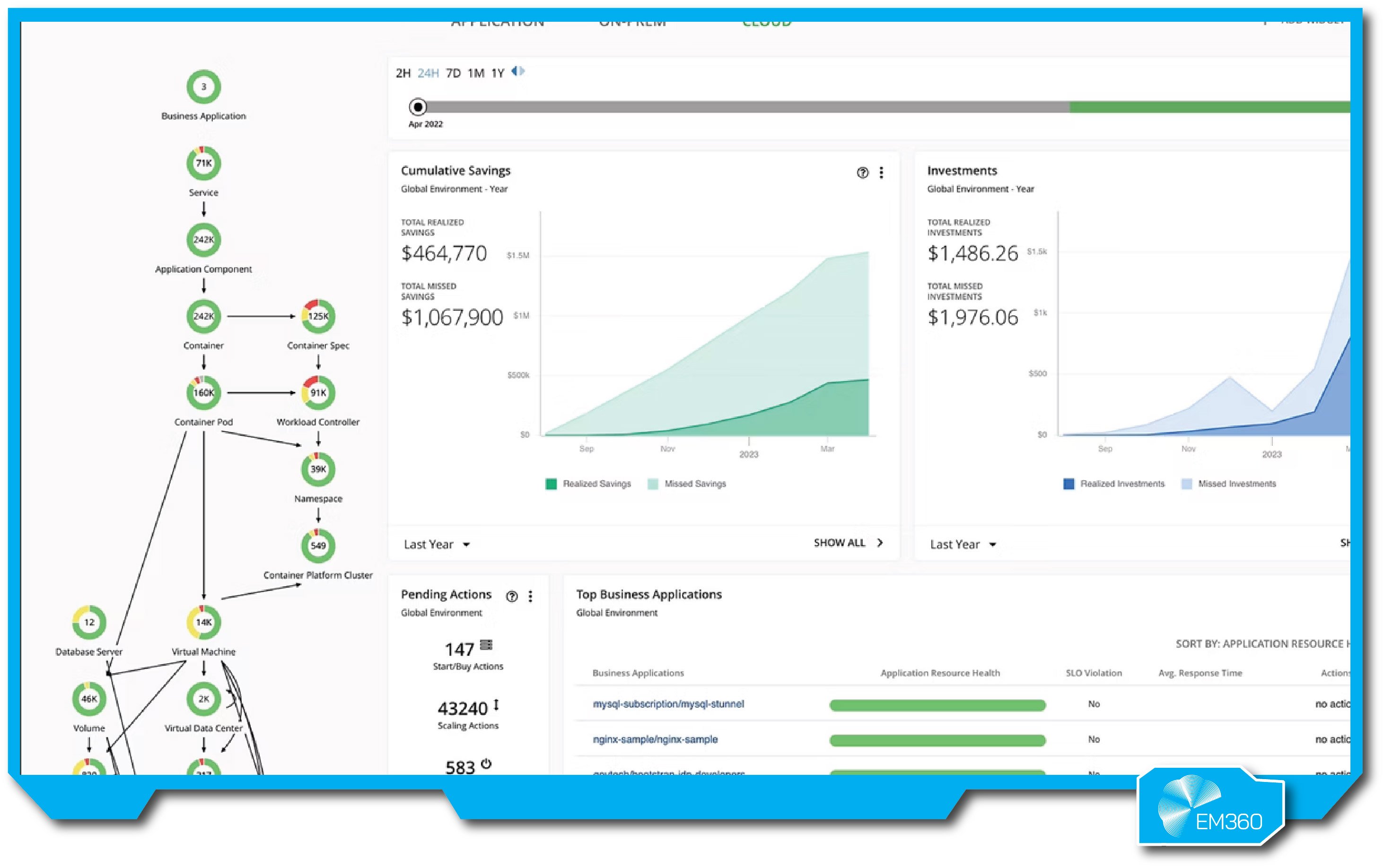
IBM has assembled an impressive portfolio of FinOps and optimisation tools through acquisitions. Apptio Cloudability provides cost allocation and budgeting, Turbonomic automates resource optimisation across hybrid environments and Kubecost delivers granular cost visibility and optimisation for Kubernetes.
In 2025, IBM announced a next‑generation FinOps suite that tightens integration between Cloudability and Kubecost to enhance visibility and optimise cloud costs across AI‑driven environments.
Enterprise ready features
Cloudability Governance is designed to give FinOps teams proactive control over infrastructure deployments. Backed by Cloudability and integrated with HashiCorp Cloud Platform and Terraform, it enables teams to understand cost implications, forecast spend and comply with internal policies before deploying infrastructure.
It scales Infrastructure as Code, provides built‑in policy checks, offers personalised cost estimates and financial guardrails and gives near real‑time visibility into cloud costs with AI‑powered recommendations for waste reduction.
Kubecost 3.0, launched as part of IBM’s suite, helps enterprises manage Kubernetes costs at scale. It provides unified resource management across clusters, advanced savings recommendations, automated container rightsizing, GPU monitoring and enhanced security and scalability. Together, Cloudability, Turbonomic and Kubecost create a full FinOps and optimisation ecosystem.
Cloudability handles budgeting and forecasting. Turbonomic focuses on automated rightsizing and performance assurance. Kubecost brings detailed, container-level visibility and governance. Each tool solves a different part of the problem, and the value comes from how they reinforce one another.
Pros
- An integrated FinOps suite brings budgeting, forecasting, rightsizing and policy enforcement into a single operating rhythm.
- Cloudability Governance automates cost compliance and provides real-time visibility into spend and policy adherence.
- Kubecost 3.0 delivers granular Kubernetes cost insights and automated savings recommendations.
- Turbonomic adds automated resource actions to maintain performance while keeping costs under control, bringing FinOps and SRE objectives closer together.
- Integration with Terraform and HashiCorp Cloud Platform embeds FinOps into day-to-day infrastructure workflows.
Cons
- The full suite can be complex to roll out, and many organisations will need to adopt it in phases.
- Its focus on cost and performance may still require complementary tools for broader governance or compliance.
- Pricing for the entire stack may be challenging for smaller teams, though modular adoption helps.
Best for
Large enterprises that need tight alignment between financial accountability and performance across cloud and Kubernetes environments. Teams with established FinOps practices and strong infrastructure as code workflows will gain the most value from IBM’s suite.
Microsoft Azure Arc

Microsoft’s hybrid vision has always been about extending Azure services beyond its own cloud. Azure Arc embodies this by allowing organisations to project non‑Azure resources – servers, virtual machines, Kubernetes clusters and databases – into Azure Resource Manager.
It simplifies governance and management by delivering a consistent multicloud and on‑premises management platform. Azure Arc provides a centralised, unified way to manage your entire environment: projecting your existing non‑Azure resources into Azure, managing VMs and Kubernetes clusters as if they are running in Azure and using familiar Azure services regardless of location.
Enterprise ready features
Arc supports a wide range of scenarios that help enterprises bring order to fragmented environments. It provides consistent inventory, management, governance and security for servers across clouds and on premises.
Configuration management is handled through Azure VM extensions, while Kubernetes clusters can be managed and governed at scale with policies applied through GitOps. Azure Policy enables zero-touch compliance and configuration, and Azure data services can run anywhere with elastic scale and automated updates.
Arc also allows teams to create custom locations on top of Arc-enabled Kubernetes clusters to deploy Azure services closer to where workloads run. VM lifecycle operations extend into VMware vSphere and SCVMM environments, with delegated self-service made safe through RBAC. All of this is accessible through a unified experience across the Azure portal, CLI, PowerShell and REST API.
Pros
- Extends Azure governance, policy and security to on‑premises, AWS and GCP resources for consistent management.
- Supports GitOps for configuration deployment across clusters, enabling declarative management.
- Enables running Azure data services on any Kubernetes environment with automated updates and elastic scaling.
- Integrated RBAC and identity federation allow developers to self‑serve while maintaining control.
- Unified experience via portal, CLI and APIs reduces training overhead for IT teams.
Cons
- Deep integration with Azure may discourage adoption in organisations seeking to remain cloud‑agnostic.
- Some features (e.g., Arc‑enabled data services) carry additional licensing or service costs.
- Kubernetes configuration and policy management require familiarity with GitOps and Azure Policy constructs.
Best for
Microsoft‑centric enterprises needing unified governance beyond Azure boundaries. Azure Arc suits organisations with distributed workloads who want to apply Azure’s identity, policy and automation models to non‑Azure resources.
Nutanix Cloud Manager (NCM)
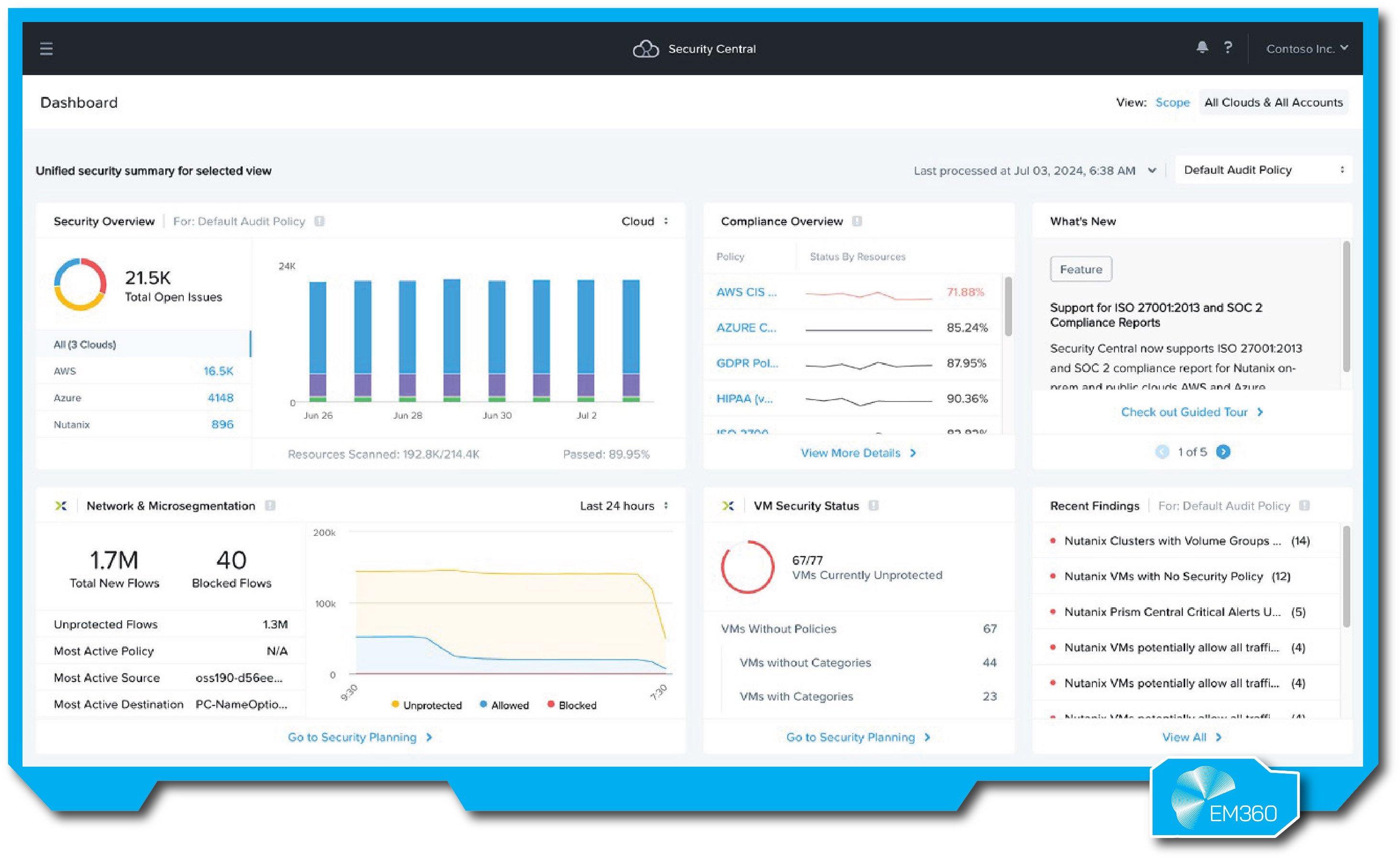
Nutanix Cloud Manager emerged from Nutanix’s experience in hyperconverged infrastructure. The company realised that its customers needed more than hardware; they needed a platform to manage applications and IT infrastructure across public, private and hybrid clouds.
NCM is a holistic multicloud management platform that makes it easier for enterprises to build, operate and govern applications and infrastructure.
Enterprise ready features
NCM brings together intelligent operations, self-service and cost governance in one place. Monitoring, insights and automated remediation help teams stay ahead of issues instead of reacting to them. Self-service and orchestration make it easier to deploy and scale applications across different environments while keeping governance intact.
Cost governance brings clarity to multicloud spend through metering, optimisation and chargeback. Security Central adds a unified view of workload security across clouds, automating incident response and supporting regulatory needs.
The platform also includes RBAC, blueprints, capacity forecasting and machine-learning-based performance anomaly detection. SaaS editions extend these capabilities as managed services.
Pros
- A holistic platform that covers operations, self-service, cost governance and security in one solution.
- Intelligent operations surface proactive insights, detect performance anomalies and automate remediation.
- A self-service marketplace and strong orchestration allow teams to provision and scale while still following governance rules.
- Cost governance and metering provide clear visibility into multicloud spend and support budgeting and chargeback.
- Security Central unifies workload security across clouds and automates incident response.
Cons
- Best suited to Nutanix-centric environments; full public cloud coverage may require extra integrations.
- The breadth of features can present a learning curve for teams new to the Nutanix ecosystem.
- Some advanced capabilities may sit behind higher-tier editions or SaaS add-ons.
Best for
Organisations that rely on Nutanix infrastructure and want unified visibility and operations across hybrid and multicloud environments. It suits enterprises looking to consolidate operations, cost management and security into a single console while keeping the flexibility to run workloads across different clouds.
Red Hat Advanced Cluster Management for Kubernetes (ACM)
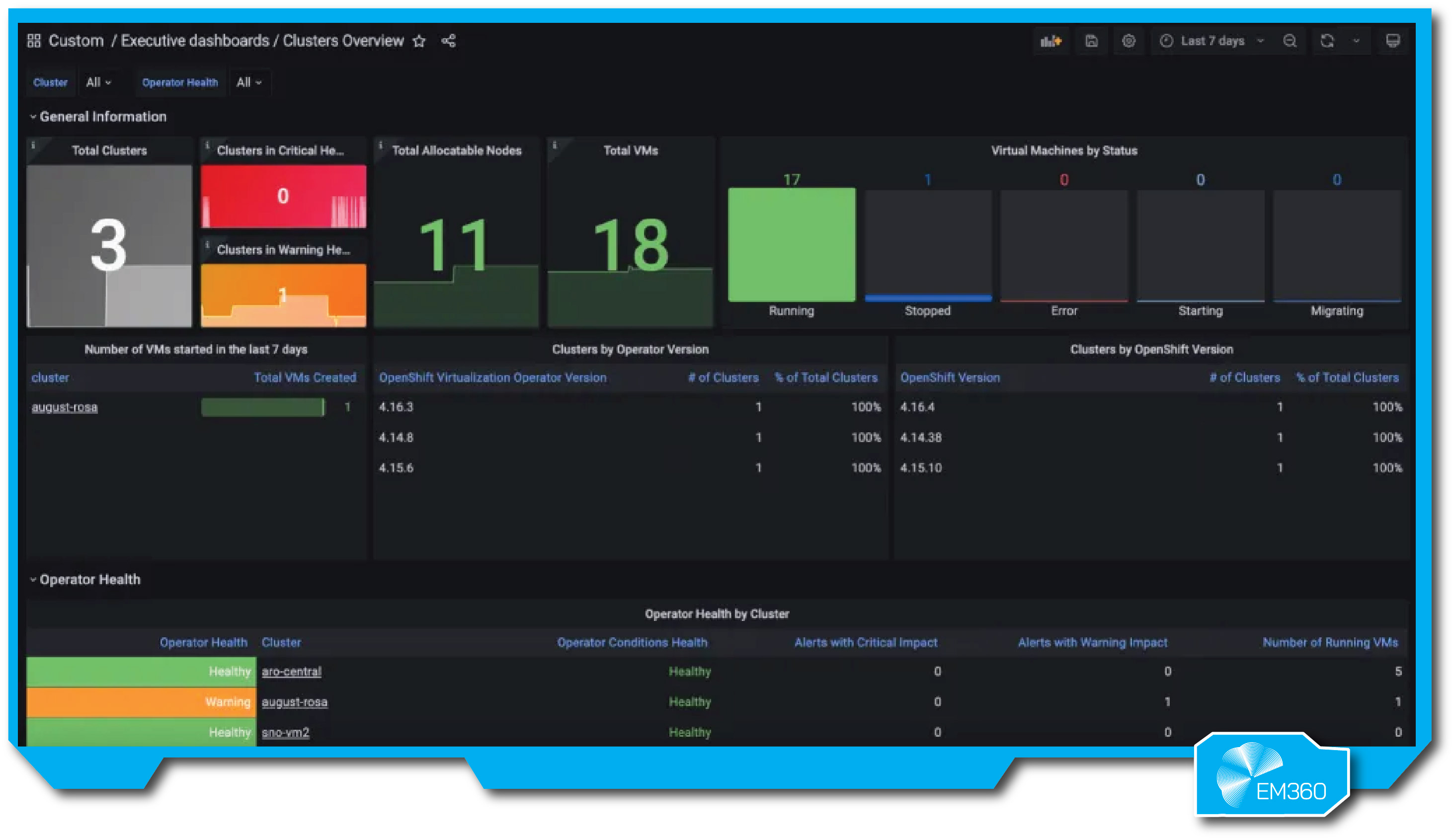
As Kubernetes adoption exploded, Red Hat saw a need for a platform that could manage cluster sprawl, enforce policies and provide visibility across distributed environments. Red Hat Advanced Cluster Management for Kubernetes (ACM) delivers end‑to‑end management, visibility and control for cluster and application lifecycle, along with security and compliance across multiple datacenters and public clouds.
It provides a single view to manage Kubernetes clusters and makes it easy to provision new Red Hat OpenShift clusters across AWS, Azure, Google Cloud, bare metal, Red Hat OpenStack and VMware vSphere. Existing clusters, whether OpenShift or managed Kubernetes services like Amazon EKS and Azure Kubernetes Service, can be imported and managed alongside new clusters.
Enterprise ready features
ACM’s key benefits include self‑service provisioning of clusters, freeing up IT departments and accelerating deployment; the ability to deploy legacy and cloud‑native applications quickly across distributed clusters; and centralised policy enforcement to ease security compliance.
It reduces operational costs through a unified management interface. Multicluster observability provides dashboards and metrics for fleet health and optimisation. Unified life‑cycle management creates, upgrades and imports clusters reliably at scale, with support for multiple cloud providers.
Integration with Red Hat Ansible Automation Platform automates Day‑0 and Day‑1 operations such as network and firewall configuration.
Pros
- End‑to‑end management and visibility across Kubernetes clusters simplify operations for SREs and administrators.
- Self‑service cluster provisioning accelerates development and reduces IT bottlenecks.
- Centralised policy enforcement across clusters eases compliance and security management.
- Multicluster observability and unified life‑cycle management support efficient monitoring and upgrades.
- Integration with Red Hat Ansible automates infrastructure configuration and ongoing operations.
Cons
- Focused on Kubernetes; organisations with significant VM workloads may need complementary tools.
- Red Hat OpenShift bias may require adaptation for pure upstream Kubernetes or other distributions.
- Complexity of multicluster governance may demand specialised skills and training.
Best for
Enterprises using OpenShift or managing multiple Kubernetes clusters across hybrid environments. ACM is ideal for organisations that need policy enforcement, observability and lifecycle management at fleet scale.
VMware Aria + VMware Cloud Foundation Operations
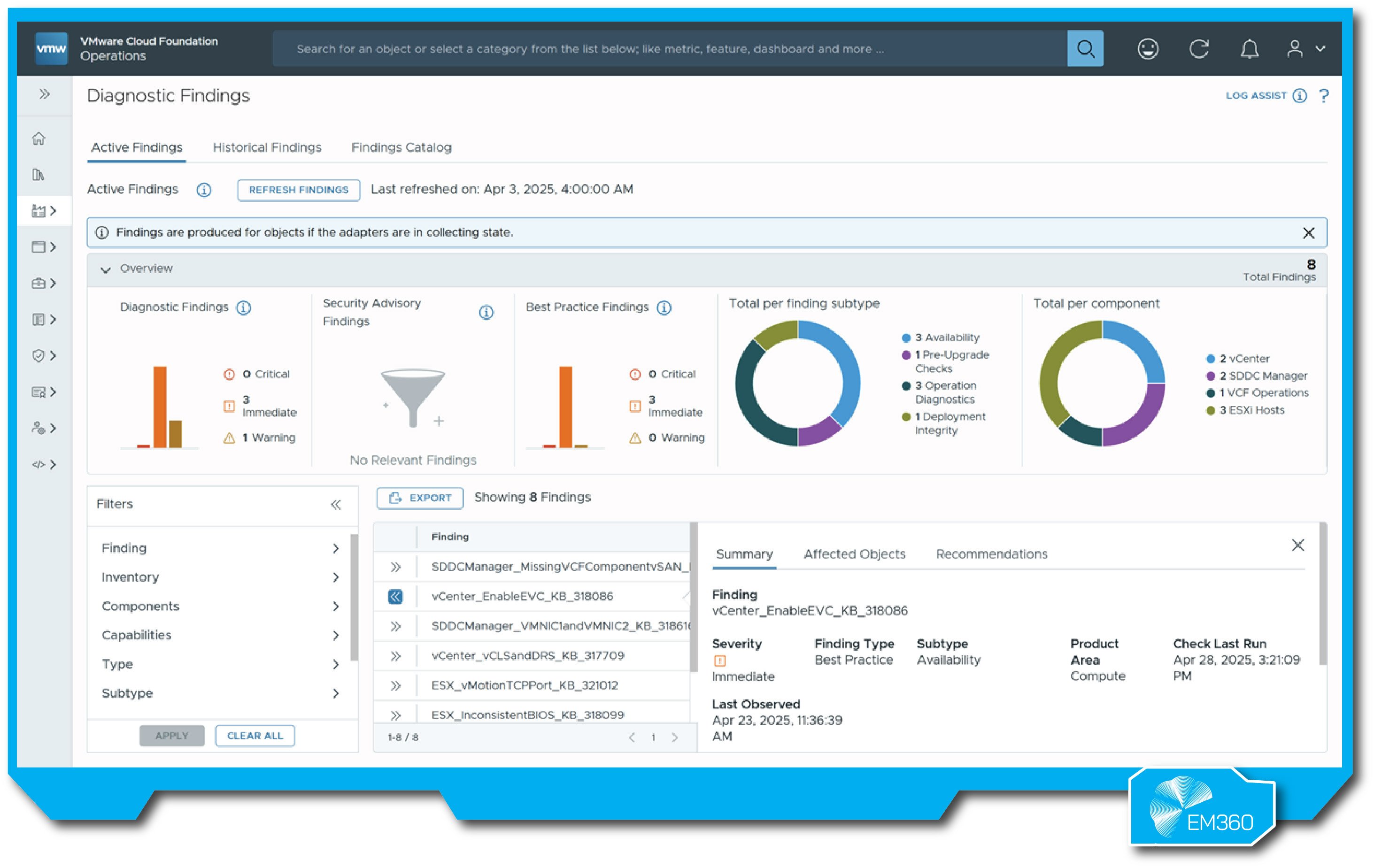
VMware has been a dominant force in virtualisation and private cloud. To stay relevant in a multi‑cloud world, VMware launched VMware Aria, a suite of multi‑cloud management tools that unify cost, performance, configuration and delivery automation across environments.
Complementing Aria is VMware Cloud Foundation Operations (VCF Operations), which modernises private cloud management with unified visibility, predictive analytics and compliance. Together they form a powerful platform for enterprises seeking full‑stack visibility and optimisation.
Enterprise ready features
VMware Cloud Foundation Operations gives organisations a clearer way to run and protect private cloud environments. It delivers fleet-level visibility across compute, storage and network, backed by centralised identity, licensing and lifecycle controls.
Real-time analytics and AI-driven insights support continuous optimisation, rightsizing and chargeback, while integrated security dashboards and automated compliance keep risk contained. Troubleshooting and remediation are streamlined, and workload migration across data centres is fully supported.
The Operations Orchestrator reduces complexity further through integrations with third-party workflows. VMware Aria adds the multicloud view. It brings cost, performance, configuration and automation into a single control plane, giving teams a consistent understanding of how applications behave across clouds.
Cost visibility, forecasting and continuous optimisation help rein in multicloud spend, while predictive analytics automate workload placement and issue remediation. Aria can run as SaaS, on premises or both, and its broad ecosystem integrations give enterprises room to scale without lock-in.
Pros
- Unified suite covers cost, performance, configuration and automation across private and multi‑cloud environments.
- Real‑time predictive capacity and cost analytics drive continuous optimisation and rightsizing.
- Integrated security and compliance features reduce risk and ensure regulatory adherence.
- VCF Operations Orchestrator streamlines complex IT tasks and integrates with third‑party workflows.
- Flexible deployment options (SaaS, on‑premises or hybrid) and broad ecosystem make Aria adaptable.
Cons
- The combined suite is comprehensive and may be costly or complex for smaller organisations.
- Deep expertise in VMware ecosystems is often required to fully leverage advanced features.
- Organisations focused on container‑native approaches might see VMware’s VM heritage as a mismatch.
Best for
Enterprises with diverse VMware workloads seeking full‑stack visibility, performance optimisation and cost management across private and public clouds. The combination of Aria and VCF Operations is especially valuable for organisations consolidating private cloud operations while embracing multi‑cloud strategies.
How to Choose the Right Platform for Your Cloud Landscape
Choosing a cloud complexity platform is not about finding a perfect, all-in-one answer. It is about matching real capabilities to the pain points in your environment. A few criteria matter more than anything else.

Cloud coverage
Start by looking at where your workloads live today and where they are likely to grow. Some platforms focus on Kubernetes and containers, while others span virtual machines, bare metal and even SaaS. Whatever you choose should support your current mix of providers and have a roadmap that aligns with future adoption.
Policy integration
Policies need to be defined once and enforced everywhere. Look for tools that store policies as code, support GitOps and offer prebuilt rules for cost, security and compliance. The aim is to automate governance without slowing down delivery.
Automation maturity
Different environments need different levels of automation. Basic automation covers provisioning and simple scaling. More mature needs call for AI-driven rightsizing, anomaly detection and automated remediation. Make sure the platform fits into your CI/CD pipelines and works with your existing infrastructure as code tools.
FinOps capabilities
Cost governance is becoming central to cloud strategy. Platforms strong in FinOps offer real-time visibility, budgeting, chargeback and optimisation for commitments like reserved instances or savings plans. These capabilities matter more as cloud footprints expand.
Security and compliance
Security teams need consistent controls across clouds. Look for platforms that can enforce policy centrally, provide clear audit trails and support regulatory requirements. A unified view of security posture reduces the burden on teams already stretched thin.
Ecosystem and integration
Any platform you choose should fit into your existing ecosystem. Integration with configuration management tools, CI/CD systems, ticketing workflows and monitoring platforms is key. Open APIs and SDKs give you room to build custom workflows without locking yourself in.
Organisational alignment
Finally, consider who will use the platform day to day. What works for SREs may not meet the needs of finance or security. Tools that offer role-based access and persona-specific dashboards create clearer alignment across teams.
When you weigh these criteria against your cloud maturity and strategic priorities, the shortlist becomes clearer. Many organisations end up pairing tools — for example, a Kubernetes management platform alongside a FinOps suite — because complexity rarely falls into one category. The aim is not fewer clouds, but better control of the ones you already rely on.
Final Thoughts: Simplicity Is the New Scale Strategy
Cloud complexity is not failure. It is what happens when ambitious organisations expand across public, private, hybrid and edge environments. The friction is inevitable, but it does not have to become chaos. With unified control, policy as code, automation and financial governance, enterprises can restore clarity across clouds.
The idea is simple. In a multicloud world shaped by rising AI demand, simplicity becomes a scale strategy. Unified platforms turn visibility, governance and performance optimisation into ongoing disciplines that align engineers, security teams and finance leaders.
The IT leaders who stand out in 2025 will not be the ones with the most tools, but the ones who create the clearest path through them. They make sure technology supports the strategy, not the other way around.
For more expert perspectives on managing hybrid complexity, EM360Tech’s podcasts and deep-dive articles bring enterprise leaders closer to the solutions shaping tomorrow’s infrastructure.


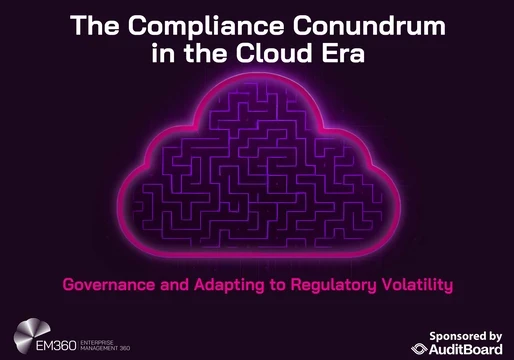

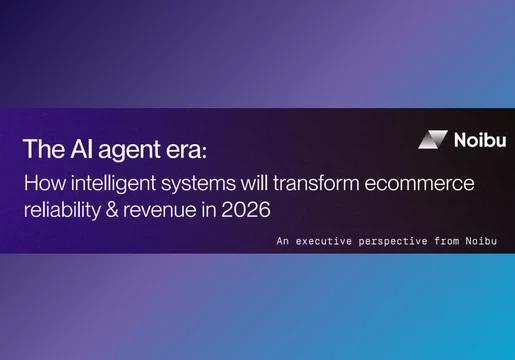


Comments ( 0 )